|
Madder, once the most valuable dye plant in Azerbaijan and the world. It is found (as Rubia tinctorum L) in Azerbaijan in the Greater Caucasian Mountains, in Absheron peninsular, in Kur (Kura)-Araz (Aras), Lenkaran (Lenkoran) lowlands, in Ganykh-Agrichay valley, also in Nakhchyvan. It is common at the foot of mountains, on riversides, along the fences in villages and also in weedy areas. There is also another kind of madder growing in Azerbaijan, which is called Rubia iberica Fisch.
Madder is a low creeping plant that will cover an area of ground quite quickly. It does not need a great deal of looking after apart from the occasional weeding. The plant matures at 5 years old. The flowers are small and yellow/green in colour. The berries are dark when ripe and can be used as seed stock to multiply the crop.
|
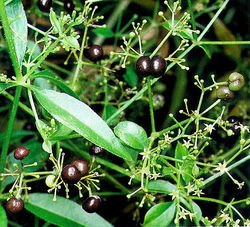 Rubia tinctorum L. Rubia tinctorum L.
|
|
All parts of the madder plant contain dye substance the pigment, alizarin (The word alizarin ultimately derives from the Arabic al-usara, juice), but the roots have the largest concentration. The plant should be pulled from the ground after loosening the soil. The leaves can then be stripped of the plant and the roots put in a sheltered place to dry out. When the roots are dry, it is ground up into a powder. The powder produced bright red color if it is soaked overnight, then steeped briefly at around 65 degrees centigrade (150°F). It also yields the so-called "second red," which is the color of cantaloupe flesh. For the first red, the wet, mordanted yarn is gently "cooked" below a simmer till the dyer sees the color he wants; then it is carefully rinsed in water containing oak ash - whose alkalinity brightens the color - and dried. The dye is fixed to the cloth with help of a mordants. Dyeing without any mordant will give us brownish brick red color.
The size and age of the root can change the resultant color. The smaller and younger root produce a red that tends towards pink in hue. Older and larger root produces a much browner red. |
| |
|
|
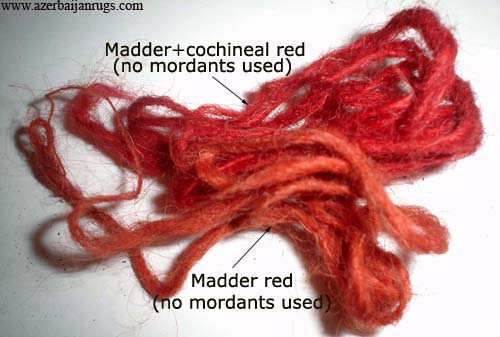 |
Mordants >> Colors
alum+madder=red, deep red
copper+madder=brighter red
tin+madder=red
The bright clear red color of some antique Karabagh (Shusha) and so called Dragon rugs of Azerbaijan were dyed with madder mordanted with tin.
|
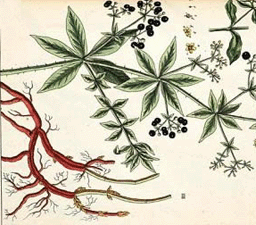 |
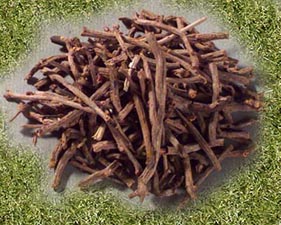 |
| Madder. Rubia tinctorum L |
Dried madder roots |
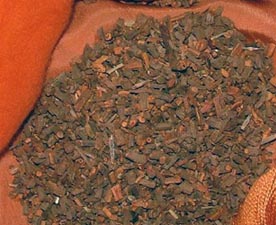 |
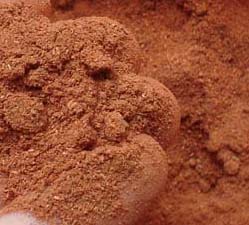 |
| Chopped madder roots |
Ground madder |
| |
|
|
|
Madder use in history
-
Madder has been cultivated as a dyestuff since antiquity in Caucasia, Anatolia, Middle East and Egypt, where it was grown as early as 1500 B.C. Cloth dyed with madder root pigment was found in the tomb of the Pharaoh Tutankhamun (1325 B.C.) and in the ruins of Pompeii and ancient Corinth. In the middle ages, Charlemagne encouraged madder cultivation. It grew well in the sandy soils of the Netherlands and became an important part of the local economy.
-
Dioscorides and Pliny the Elder (De Re Natura) mention the plant (Rubia passiva).
-
In Viking age levels of York, remains of both woad and madder have been excavated.
-
2nd and 3rd Centuries AD Roman graves found with madder and indigo dyed textiles, replacing the old Imperial Purple (purpura)
-
Some textiles dyed with madder come from the grave of the Merovingian Queen Arnegundis (or Arnegunde) in St. Denis near Paris. Queen Arnegunde, was wife of King Clotaire I (511-561) and mother of Chilperic. The queen was buried sometime between 580 and 590, aged 70 to 80 years old.
|
|

Pedanius Dioscorides(ca. 40 in Anazarbus, Cilicia-ca. 90) ancient Greek physician, pharmacologist and botanist
|

Gaius Plinius Secundus ( Pliny the Elder) (23 AD to August 24, 79 AD)-ancient author, natural philosopher and naval and military commander
|
|
-
The 10th century Muslim Persian geographer Al-Istakhri gives us information concerning the export of madder dye from Barda* (Azerbaijan, Arran) to India.
-
In the "Capitulare de villis" of Charlemagne, madder is mentioned as "warentiam".
-
The herbal of Hildegard of Bingen mentions the plant as well.
-
The red coats of British soldiers also came from the madder plant. Once one of the only source of red pigment, madder is now only used by home dyers and heritage crafters.
-
In 1826, the French chemist Pierre-Jean Robiquet found there were two colorants in madder root, alizarin and the more rapidly fading purpurin. The alizarin component became the first natural dye to be synthetically duplicated in 1868 when the German chemists Karl Graebe and Karl Lieberman, working for BASF, found a way to produce it from anthracene. About the same time, the English dye chemist William Perkin independently discovered the same synthesis, although the BASF group filed their patent before Perkin by only one day. The synthetic alizarin could be produced at less than half the cost of the natural product, and the market for madder collapsed virtually overnight. Alizarin itself has been in turn largely replaced today by the more light-resistant quinacridone pigments developed at DuPont in 1958.
|
|
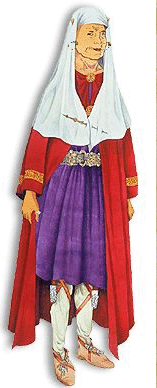 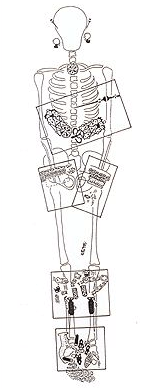
Queen Arnegundis in her dress dyed with madder
|
| |
-
In the middle of the XIXth century, the madder business was an important agricultural industry in Azerbaijan, especially in the Kuba (Guba) district
Notes
Barda*- today it is a small provincial town on the Terter river in Azerbaijan. For a long period Barda was the seat of both the Albanian kings and the Albanian Christian Chruch as well as an important trading and cultural centre. During Islamic times, it was the chief city of Arran.
|
|
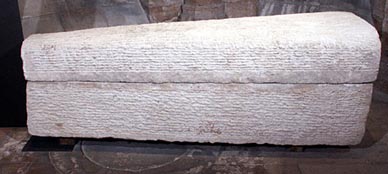
Stone sarcophagus of queen Arnegunde
|
|
Recipe of dyeing wool with madder
Madder Root with Chrome Mordant One kilo of wool requires the same weight of madder root, 8 tablespoons of tartaric acid and one cup of dye salts. The wool is scoured and mordanted with chrome. The madder roots arc cut into 2 cm (¾") chips, covered with 33 litres (7 ¼ gallons) of wafer and soaked for twelve hours until the roots absorb the water and swell a little. After soaking, 4 ½ litres (one gallon) of water are added and boiled for forty five minutes, cooled and the roots removed. The damp wool is added to the dye bath and simmered for half an hour; less time is necessary if lighter shades are required. A solution of tartaric acid and dye salts in one litre (1 ¾ pints) of water is added to the dye bath, simmered for a further half hour, after which time the wool is cooled and rinsed, wrung out and left to dry in the shade.
|
|
| |
| |
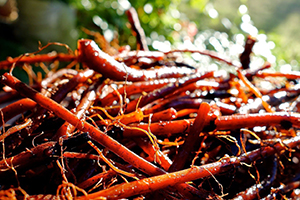



 Rubia tinctorum L.
Rubia tinctorum L.







